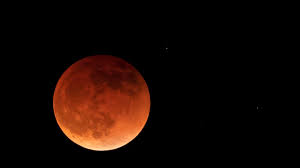Chandra Grahan and Surya Grahan are the Hindu terms for lunar and solar eclipses, respectively. They differ in several significant ways:
1. Occurrence :
Chandra Grahan (Lunar Eclipse): A Chandra Grahan occurs when the Earth comes between the Sun and the Moon, causing the Earth’s shadow to be cast on the Moon. It can only occur during a full moon when the Earth, Moon, and Sun are aligned in a straight line.
Surya Grahan (Solar Eclipse): A Surya Grahan occurs when the Moon comes between the Earth and the Sun, blocking the Sun’s light from reaching the Earth. It can only occur during a new moon when the Earth, Moon, and Sun are aligned in a straight line.
2. Visibility :
Chandra Grahan: Lunar eclipses are visible from all locations on the night side of the Earth where the Moon is above the horizon during the eclipse.
Surya Grahan: Solar eclipses are visible from specific regions on Earth where the Moon’s shadow falls. A total solar eclipse is only visible from a narrow path on Earth, while a partial solar eclipse is visible from a larger area.
3. Safety :
Chandra Grahan: Lunar eclipses are safe to observe with the naked eye, telescopes, or binoculars. No eye protection is required.
Surya Grahan: Solar eclipses are dangerous to view with the naked eye because looking at the Sun during an eclipse can cause severe eye damage or blindness. Special eye protection, such as eclipse glasses or solar filters for telescopes and cameras, is essential.
4. Duration :
Chandra Grahan: Lunar eclipses can last for several hours, with the Moon gradually passing through the Earth’s shadow.
Surya Grahan: Solar eclipses, particularly total solar eclipses, are relatively short in duration, often lasting only a few minutes at any given location.
5. Color :
Chandra Grahan: During a total lunar eclipse, the Moon may appear to take on a reddish or coppery color due to the scattering of sunlight through the Earth’s atmosphere. This phenomenon is often referred to as a “Blood Moon.”
Surya Grahan: During a total solar eclipse, the Sun is completely blocked by the Moon, and the sky darkens. There is no color change observed.
Both Chandra Grahan and Surya Grahan have cultural and astrological significance in various societies, and people often have different beliefs and practices associated with these celestial events. While lunar eclipses can be safely observed with the naked eye, it’s crucial to protect your eyes when viewing a solar eclipse.
also read other news :
What is a Chandra Grahan? Mystery of Lunar Eclipses !!
Lunar Eclipse : The Celestial Dance of Earth, Moon, and Sun
Is it safe to watch a lunar eclipse with the naked eye?
Cultural and Religious Beliefs Surrounding Lunar Eclipses !!
What is the astrological significance of a Chandra Grahan?
How Often Do Lunar Eclipses Occur : Frequency and Visibility
Can a Chandra Grahan be predicted in advance?
What equipment do I need to observe a lunar eclipse?
What are some popular myths or misconceptions about lunar eclipses?
